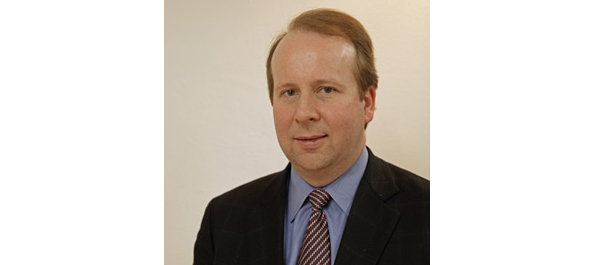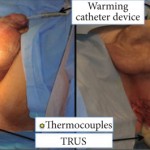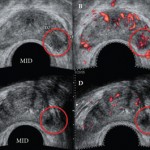Editorial: Salvaging failed radiation therapy: does the tumour location permit a less toxic approach?
In the introduction to their manuscript in this issue of the BJUI, Meeks et al. outline a significant challenge for physicians managing prostate cancer: from the estimated 240 000 diagnosed annually (USA) to the 120 000 choosing radiation, to the 40 000 estimated biochemical failures in the first 5 years who may benefit from additional local therapy to avoid local and/or systemic progression. The basis of these calculations was from conventional beam radiation, and although we expect dose-escalation strategies to perform better, the ideal management strategy remains to be identified. Indeed, Zelefsky et al. showed that there was a higher risk of metastatic disease with external beam radiation therapy than with surgery for high-risk prostate cancer, although there was some confounding of the results due to the differences in salvage treatment. This confounding may be the key point: more acceptable salvage options may promote optimal local control and fewer progressions.
Certainly, the concern with salvage therapy after failed radiation is the toxicity, and the concept of achieving less urinary incontinence with cryotherapy or even focal cyrotherapy is attractive, as outlined by de Castro Abreu et al. in this issue. In their parallel cohorts of total and focal salvage cryotherapy, urinary incontinence occurred in three (13%) of the 25 salvage total and zero of the 25 salvage focal therapies, and there was only one fistula in either series. However, the cancer control outcomes are different among these non-randomised and non-comparable cohorts: 87% disease-free survival for patients with bilateral disease treated with total cryotherapy and 54% disease-free survival for patients with unilateral disease treated with focal cryotherapy. These comparisons are limited, but one could hypothesise that salvage total therapy has improved disease control over salvage focal therapy.
Returning to the Meeks et al. study, a cohort of 198 patients with biopsy confirmed radiation recurrence underwent a salvage prostatectomy at a single institution. Pre-treatment biopsies showed 48% and 13% Gleason sums 7 and 8–10, respectively, and multifocal location in 61% (92/151 patients). Salvage prostatectomies showed 56% advanced pathological stage and 35% Gleason 8–10, and multifocal location in 57%. In comparing specific biopsy locations to radical prostatectomy mapping, undetected cancers from biopsy ranged from 12% to 26%, and 58% upgrading. In patients with unilaterally localised biopsies, final pathology was unilateral in only half – a statistic that matches the PSA failure rate from focal therapy in the de Castro Abreu et al.’s study. The authors point to a non-radiated biopsy-to-prostatectomy study and by comparison conclude that the accuracy of biopsy in radiated prostates is actually greater, perhaps due to the smaller radiated gland. But let’s be clear – both groups had significant rates of multifocal disease and inaccuracies between biopsy and radical prostatectomy.
These two BJUI studies provide a developing agenda of what we know and do not know about salvage therapy for failed radiation:
- Local failure after radiation selects patients who probably have significant disease in terms of volume, stage, and grade, and should not be confused with the over-detection of low-volume, low-grade disease seen in primary treatments for PSA-screened disease.
- Salvage focal therapy for unilateral disease by biopsy may be less morbid but may be only 50% effective.
- The link between metastatic progression and PSA failure after failed salvage focal therapy is unknown, and completion treatment of the other side could be studied.
- The additive accuracy of post-radiation biopsy plus imaging is not established.
- We are basing most of our treatment recommendations on tumour morphology (histopathology, location, size) and surrogates (PSA failure definitions) rather than biology and survival.
- The current management of post-radiation local failure should consider total gland treatments as the standard and focal therapies as experimental.
John W. Davis and Seungtaek Choi*
Departments of Urology and *Radiation Oncology, UT MD Anderson Cancer Center, Houston, TX, USA




Dear John
Your editorial summarises brilliantly these important recent articles in BJUI. This is a patient population that we are seeing more and more frequently then is the optimum strategy is not clear. It is important to note as in these papers, that many of these patients have threatening disease by their nature. In the past month alone I have scheduled two patients for salvage robotic radical prostatectomy for Gleason 8 cancer, five years post external beam radiation for Gleason six cancer. Does radiation really make cancer angry?? Whatever the case, as the Meeks paper reports, these cases are certainly not appropriate for focal therapy.
Declan Murphy (Melbourne)
Dear John,
Excellent editorial and well summarised towards the end about the “agenda needed for more studies.”
There are a few additional points that needs consideration
1. The study by Meeks et al, does not comment whether the post-radiotherapy patients were receiving/received adjuvant hormone treatment? It is well recognized that other than radiotherapy, prior or ongoing hormonal manipulation can alter the architecture of the cancer recurrence, making Gleason grading difficult.
2. The study by Meeks et al has also raised a very important finding that the Apex was the most common area of persistence/recurrence of the tumour. This highlights that this region may not be receiving the adequate “cancer-kill” dose. Although the apex is the region for most positive surgical margins during RALP, it is very unlikely that this positive margin is the cause of PSA relapse, suggesting that RALP is definitely superior to radiotherapy when dealing with the Apex.
3. Another aspect that needs more attention is the neuroendocrine de-differention of prostate cancer following radiotherapy. I have come across few cases of neuroendocrine tumours in post-radiotherapy recurrent prostate cancer. There is emerging evidence that NE cells play an important part in the pathogenesis of prostate cancer and indeed, ionizing radiation induces neuroendocrine differentiation of prostate cancer cells in vitro, in vivo and in prostate cancer patients (Deng X, et al, 2011). There is some amount of evidence when Declan says “Does radiation really make cancer angry??!!
And lastly,
4. I agree with Dr Murphy’s comments about more patients are now being considered for salvage robot-assisted radical prostatectomy. This is due to “cultural shift” in the way patients are being referred by the Oncologists at the MDT meetings. Most often than not, patients who have biochemical recurrence after RALP are discussed again in the MDT with a view of adjuvant therapy (radiotherapy or Androgen Deprivation Therapy). However, patients under the oncologists who have biochemical failure after radiotherapy, traditionally go onto ADT (albeit salvage cryotherapy in very selected centres) rather than being offered salvage prostatectomy! The shift in the paradigm by thre oncologist may be due to the emergence of robot-assisted prostatectomy, although this point is debatable.
Amrith Rao, Wexham Park Hospital, UK